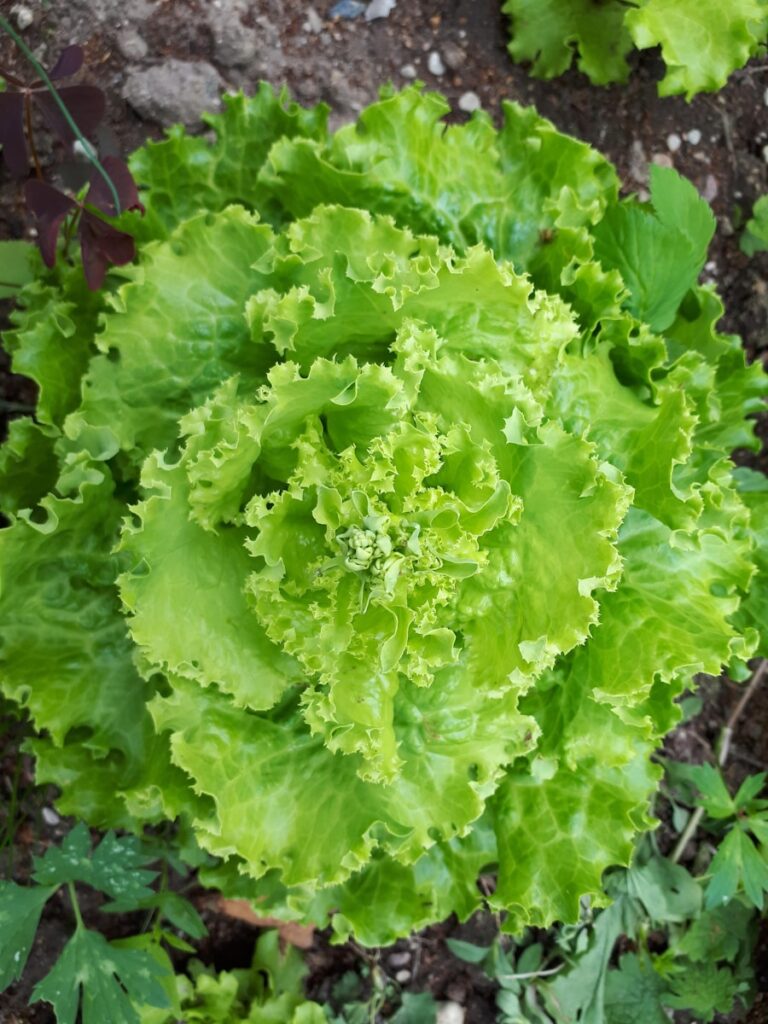In recent years, the food industry has faced significant challenges due to outbreaks of foodborne illnesses, with the E. coli outbreak linked to romaine lettuce being one of the most notable. This particular outbreak has raised alarms among health officials and consumers alike, as it highlights the vulnerabilities within the agricultural and distribution systems.
The Centers for Disease Control and Prevention (CDC) reported numerous cases of E. coli infections associated with romaine lettuce, prompting widespread recalls and public warnings. The outbreak not only affected consumers but also had far-reaching implications for farmers, retailers, and the entire food supply chain.
The source of the contamination was traced back to specific growing regions, leading to increased scrutiny of farming practices and water sources used in irrigation. As investigations unfolded, it became clear that the problem was not isolated to a single farm or batch of lettuce but rather indicative of systemic issues within the industry. The outbreak served as a stark reminder of the potential risks associated with fresh produce and the importance of stringent safety measures throughout the food production process.
Key Takeaways
- The Romaine Lettuce E Coli outbreak has affected the food industry and raised concerns about food safety.
- Symptoms of E Coli infection include stomach cramps, diarrhea, and vomiting, and can be severe in some cases.
- To protect yourself from E Coli contamination, wash your hands and produce thoroughly, cook meat to a safe temperature, and avoid cross-contamination.
- The E Coli outbreak has impacted the food industry, leading to recalls and a focus on improving safety measures.
- Steps being taken to address the E Coli outbreak include increased testing and monitoring of produce, as well as improved communication between growers and regulators.
- If you think you have been exposed to contaminated Romaine Lettuce, seek medical attention and report your illness to your local health department.
- Proper food handling and preparation are crucial in preventing E Coli contamination, including washing hands, surfaces, and produce, and cooking food to a safe temperature.
- The future of Romaine Lettuce safety involves ongoing efforts to improve growing, harvesting, and processing practices to minimize the risk of E Coli contamination.
Symptoms of E Coli Infection
Symptoms of E. coli Infections
Common symptoms of E. coli infections include abdominal cramps, diarrhea, and vomiting. In many cases, individuals may experience a sudden onset of these symptoms within three to four days after exposure to the bacteria.
Complications and Severity
While some people may recover without medical intervention, others may develop more serious complications that require hospitalization. The severity of symptoms can vary significantly based on the strain of E. coli involved and the individual’s overall health.
Hemolytic Uremic Syndrome (HUS) and Kidney Failure
In particular, a strain known as E. coli O157:H7 is notorious for causing severe illness, including hemolytic uremic syndrome (HUS), which can lead to kidney failure. Symptoms of HUS may include decreased urination, extreme fatigue, and pale skin. It is crucial for individuals experiencing these symptoms, especially after consuming romaine lettuce or other potentially contaminated foods, to seek medical attention promptly. Early diagnosis and treatment can be vital in preventing serious health complications.
How to Protect Yourself from E Coli Contamination

Protecting oneself from E. coli contamination requires a combination of awareness and proactive measures in food handling and preparation. One of the most effective strategies is to thoroughly wash all fruits and vegetables under running water before consumption, even if they will be peeled or cooked.
This practice helps remove any potential bacteria that may be present on the surface. Additionally, it is essential to keep raw meats separate from produce to avoid cross-contamination during meal preparation. Consumers should also stay informed about food recalls and safety alerts issued by health authorities.
Being aware of which products are under scrutiny can help individuals make safer choices when shopping for groceries. Furthermore, cooking foods to appropriate temperatures can significantly reduce the risk of E. coli infection, as high heat effectively kills harmful bacteria.
By adopting these simple yet effective practices, individuals can greatly reduce their risk of exposure to E. coli and other foodborne pathogens.
How the E Coli Outbreak is Impacting the Food Industry
| Impact | Statistics |
|---|---|
| Number of Reported Cases | Over 200 reported cases of E. coli infection linked to the outbreak |
| Product Recalls | Multiple food products recalled, including romaine lettuce, spinach, and other leafy greens |
| Economic Loss | Estimated economic loss of millions of dollars for the food industry due to reduced consumer confidence and product recalls |
| Consumer Confidence | Significant decrease in consumer confidence in purchasing and consuming leafy greens and related products |
| Regulatory Scrutiny | Increased regulatory scrutiny and inspections for food safety compliance in the affected industry |
The ramifications of the E. coli outbreak linked to romaine lettuce have been profound for the food industry as a whole. Farmers have faced significant financial losses due to crop destruction and recalls, while retailers have had to navigate consumer fears regarding the safety of fresh produce.
The outbreak has led to a decline in romaine lettuce sales, as many consumers opted for alternative greens or reduced their overall consumption of salad products. This shift in consumer behavior has prompted retailers to reevaluate their sourcing practices and implement more rigorous safety protocols. Moreover, the outbreak has sparked discussions about the need for improved traceability within the food supply chain.
Many stakeholders are advocating for enhanced tracking systems that can quickly identify the source of contamination in future outbreaks. This push for better traceability is not only aimed at protecting public health but also at restoring consumer confidence in fresh produce. As a result, the food industry is undergoing a transformation, with an increased focus on safety measures that prioritize both consumer well-being and product integrity.
Steps Being Taken to Address the E Coli Outbreak
In response to the E. coli outbreak linked to romaine lettuce, various stakeholders have mobilized to implement measures aimed at preventing future incidents. Government agencies such as the CDC and the Food and Drug Administration (FDA) have intensified their surveillance efforts, monitoring farms and processing facilities for compliance with safety regulations.
These agencies are also working closely with agricultural producers to develop best practices for growing and handling leafy greens. Additionally, industry organizations are investing in research to better understand the factors contributing to E. coli contamination in fresh produce.
This research includes studying soil health, water quality, and agricultural practices that may influence bacterial growth. By identifying potential risk factors, stakeholders hope to develop targeted interventions that can mitigate contamination risks before they reach consumers. These collaborative efforts represent a significant step forward in addressing food safety challenges within the industry.
What to Do if You Think You Have Been Exposed to Contaminated Romaine Lettuce

Seek Medical Attention
The first step is to seek medical attention, especially if symptoms are severe or persistent. Healthcare providers can conduct tests to confirm an E. coli infection and provide appropriate treatment options based on your condition.
Report Your Illness
In addition to seeking medical care, you should report your illness to local health authorities. This information can help public health officials track outbreaks and identify potential sources of contamination.
Enhancing Food Safety
By sharing your experiences, you play a vital role in enhancing food safety measures and preventing future outbreaks from occurring. Your prompt action can help protect others from falling victim to contaminated food products.
The Importance of Proper Food Handling and Preparation
Proper food handling and preparation are essential components in preventing foodborne illnesses like E. coli infections. Consumers must be educated about safe food practices, including washing hands before handling food, using separate cutting boards for raw meats and vegetables, and cooking foods to safe temperatures.
These practices not only protect individual health but also contribute to broader public health efforts aimed at reducing the incidence of foodborne illnesses. Moreover, restaurants and food service establishments have a responsibility to uphold high standards of food safety in their operations. Training staff on proper food handling techniques and implementing regular sanitation protocols can significantly reduce the risk of contamination in commercial kitchens.
By fostering a culture of safety within both home kitchens and professional settings, society can work collectively towards minimizing the risks associated with foodborne pathogens.
The Future of Romaine Lettuce Safety
Looking ahead, the future of romaine lettuce safety hinges on continued collaboration between government agencies, industry stakeholders, and consumers. As technology advances, there is potential for innovative solutions that enhance food safety measures throughout the supply chain. For instance, blockchain technology could be utilized for improved traceability, allowing consumers to track the origin of their produce more effectively.
Furthermore, ongoing research into agricultural practices will be crucial in identifying sustainable methods that minimize contamination risks while maintaining crop yields. As awareness grows regarding food safety issues, consumers are likely to demand greater transparency from producers about their farming practices and safety protocols. This shift could lead to a more informed public that prioritizes safe food choices while supporting responsible agricultural practices.
In conclusion, while the E. coli outbreak linked to romaine lettuce has posed significant challenges for public health and the food industry alike, it has also catalyzed important discussions about food safety practices and accountability within the supply chain. By remaining vigilant and proactive in addressing these issues, society can work towards a safer future for all consumers.
The recent romaine lettuce E. coli outbreak has raised concerns about food safety and the need for stricter regulations in the agricultural industry. According to a related article on how AI is challenging intellectual property rights, technology can play a crucial role in tracking and preventing such outbreaks in the future. By utilizing artificial intelligence and data analysis, researchers can quickly identify the source of contamination and take necessary precautions to protect consumers. This highlights the importance of leveraging innovative tools and resources, as discussed in another article on tools students can use to complete their dissertation, to address complex issues like food safety and public health.
FAQs
What is the current status of the romaine lettuce E. coli outbreak?
As of [date], the romaine lettuce E. coli outbreak has affected [number] people across [number] states. The CDC and FDA are actively investigating the source of the outbreak.
What are the symptoms of E. coli infection from contaminated romaine lettuce?
Symptoms of E. coli infection can include severe stomach cramps, diarrhea (often bloody), and vomiting. In some cases, it can lead to more serious complications such as kidney failure.
How can I protect myself from E. coli contamination in romaine lettuce?
To protect yourself from E. coli contamination, it is recommended to avoid consuming romaine lettuce from the affected regions, and to thoroughly wash any romaine lettuce before consuming it.
What should I do if I think I have consumed contaminated romaine lettuce?
If you believe you have consumed contaminated romaine lettuce and are experiencing symptoms of E. coli infection, it is important to seek medical attention immediately.
Is it safe to consume romaine lettuce from areas not affected by the outbreak?
As a precaution, it is recommended to avoid consuming romaine lettuce from any region until the source of the outbreak has been identified and the CDC and FDA have issued further guidance.






